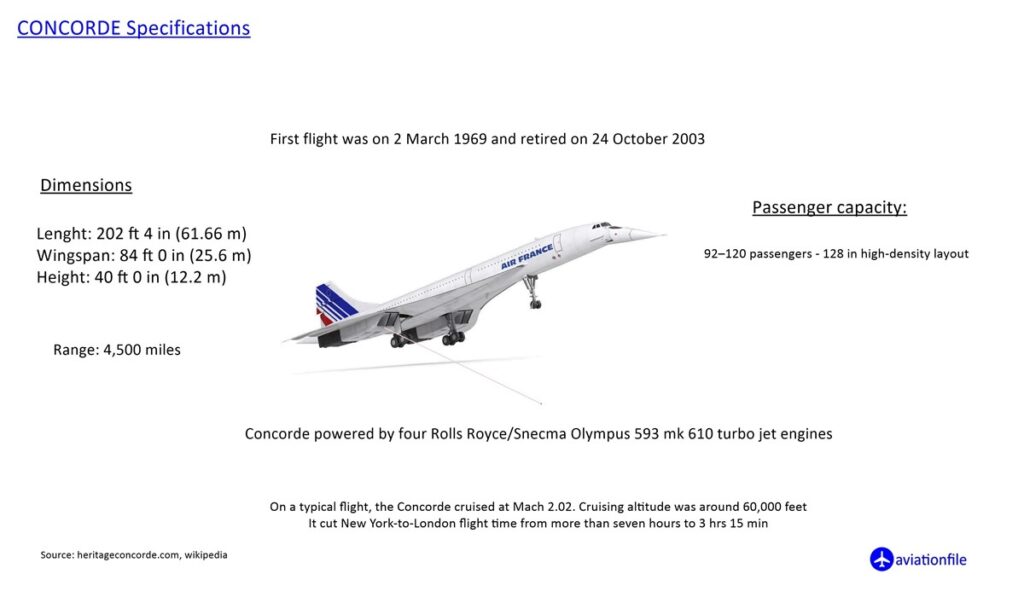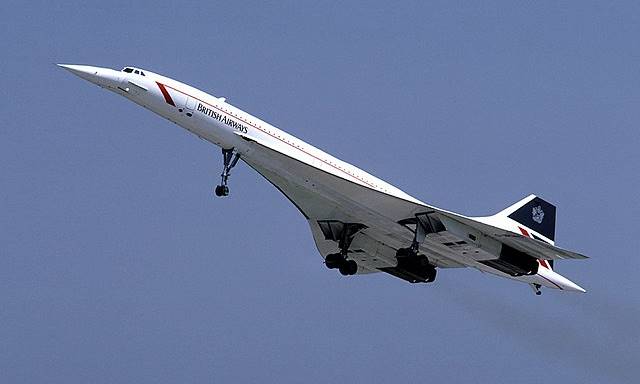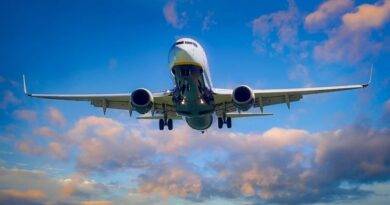Concorde: The Transatlantic Legend
Concorde is one of the most renowned commercial airliners in the world, with being the first and the fastest supersonic commercial airliner to serve. It is a complete work of perfect engineering, with a flawless design and a ahead-of-its-time technology. The airliner was developed and manufactured by a joint association between the U.K. and France. The airliner was able to travel at the speed of Mach.2.04, which is roughly equivalent to 2450.09 km/h. However, the effective cruising speed was about 2179 km/h, which is still quite high. With such a high effective cruising speed, Concorde was able to cut down the travel time roughly to half.
Also, during its time of service, Concorde was also able to break the world record as the fastest commercial airliner to pass the Atlantic Ocean. The record was broken during a regular flight on 7 February 1996.

The Idea and Early Development
After the end of World War II, aircrafts started to become a key transportation medium for traveling long distances. This was mainly due to the relatively calm and peaceful international relations following the war. There was also a very intensive competition among aircraft manufacturers to become a highly-preferred commercial airliner manufacturer. In such a peaceful (but competitive for companies) atmosphere, aircraft designers and manufacturers finally got the chance to develop more commercial airliners, such as the legendary Boeing B-707. During the same period, there was another attempt for manufacturing an airliner, but with a very different approach.
During the early 50’s, some aircraft designers and manufacturers from the United Kingdom were trying to develop projects on a supersonic commercial airliner. The plane was planned to be able to carry about 100 passengers per flight, with an additional 2.5 tonnes of cargo. Since such a big project (costing £70M – £1.39B today) would require a great amount of money -which even a whole country could not be able to afford- a partnership was required. Hence, in 1954, BAC (British Aircraft Corporation) and Sud Aviation (later to be called Aérospatiale, a state-owned French aircraft manufacturer) signed a treaty on jointly developing a supersonic commercial airliner.
The early development process started shortly after, and the British and French engineers got into a very intensive development process. After a very compelling early development stage, the plans of the 6 prototypes were ready to be built and tested. These 6 prototypes of Concorde were going to be used to develop the design even further, achieving the latest form before mass production. In addition to this, these Concorde prototypes were also going to be used during various aviation fairs in both Europe and the U.S.
Late Development of Production
By the time the prototypes were manufactured and tests were started to be conducted, the estimated cost of the project had already been passed by over ten times. The new estimated cost of the project was between £1.5B and £2.1B (£9.44B – £13.2B today). However, the project was still being developed as fast as possible, and the head project managers were still very hopeful about how successful Concorde was going to be.
During the late development process, the Concorde started to get its final shape. With two wide delta wings, no tail, an aluminum-frame, and its iconic tilted nose. The airliner was also the first plane to use the fly-by-wire technology, which was a huge revolution in the aviation world.
In the mid-70’s, the airliner was finally ready for mass production. And the first plane entered service on January 21 1976. The airliner rapidly became a center of attraction, and gained great attention from all around the world. In the following years, 13 more commercial-use Concordes were produced, reaching a total of 14 by the end of 1979.
The Service Life of Concorde
Concorde served for a total of 27 years, between 1976 and 2003 (there were some commercial flight suspension periods). During its time of service between these years, 14 Concordes flew mostly between Europe and America, providing a very short travel option for people. There were only two flight routes that Concorde flew during its time of service, which were:
- Paris Charles de Gaulle – New York JFK
- London Heathrow – New York JFK
Air France Flight 4590: The Beginning of The End for Concorde
There was only one crash during Concorde’s time of service, which is today known as Air France Flight 4590. The crash happened during the take off of a charter flight of Air France on 25 July 2000. It was caused by debris damaging a tire of the landing gear, of which chunks were scattered around and damaged the fuel tank inside the left wing, which was full during the takeoff.
A fire started under the left wing of the plane just after it took off, damaging the wires of the landing gear. The landing gear couldn’t be retracted due to the damage in the wires, and the fire started to cause the engines to lose thrust during the take off. Additionally, the pilot was completely unable to control the plane, due to unusual thrusting from the engines and the additional friction from the extended landing gear. Just two minutes after the takeoff, the pilot completely lost control, and the plane crashed into a hotel in Gonesse. A total of 113 people were killed due to the crash, 109 onboard and 4 in the hotel. There were also 6 critically injured people in the hotel.
After this accident, Concorde started to be seen as “dangerous” and “faultily-designed” by the authorities and people. It was partially suspended from flights for a period, and shortly after in 2003, the life of service of all Concordes were ended. While the reason given for this decision was said to be the high maintenance costs and increasing fuel prices, everyone knew that the number one reason for it was the Air France flight 4950.
Where Can You See A Concorde Today?
Today, you can see all surviving 19 Concordes in various public locations all around the world. The most well-known and visited Concordes today and their locations are:
- 001 – Museum of Air and Space – Le Bourget – France
- 002 – Fleet Air Arm Museum – Yeovilton – England
- 201 – Airbus France Factory – Toulouse – France
- 205 – Smithsonian Air and Space Museum – Chantilly – Virginia, U.S.
Online Sources:
- Concorde (Wikipedia) – https://en.wikipedia.org/wiki/Concorde
- Concorde (The Museum of Flight Seattle) – https://www.museumofflight.org/aircraft/concorde
- Here’s What It Was Like Flying on The Concorde, According to Its Crew And Passengers (Conde Nast Traveler) – https://www.cntraveler.com/story/celebrity-passengers-and-caviar-at-55000-feet-what-it-was-like-to-fly-concorde-in-the-70s
- Air France Flight 4950 (Wikipedia) – https://en.wikipedia.org/wiki/Air_France_Flight_4590
- How Many Concordes Were Made and What Routes Did They Fly? (KNAviation) – https://knaviation.net/concorde-number-built-and-routes/#:~:text=Without%20a%20doubt%2C%20the%20two,put%20the%20type%20into%20service.
- Locations of Concorde Planes (DaftLogic) – https://www.daftlogic.com/information-locations-of-concorde-planes.html



